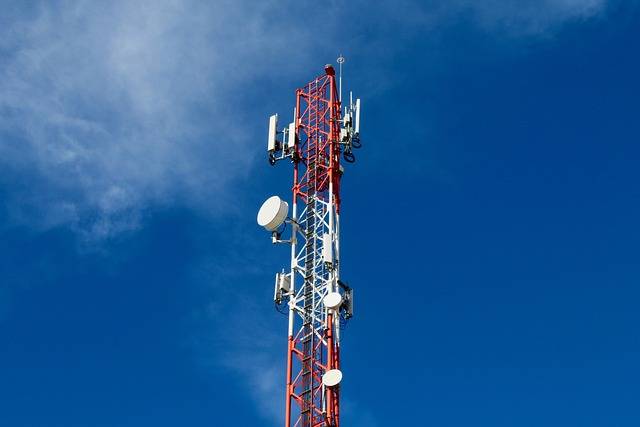Understanding Data Roaming : A Guide to Staying Connected on Your International Trips
Share
| Table of Contents | |
|---|---|
| 1. What is Data Roaming? | |
| 2. The Benefits of Data Roaming | |
| 3. The Risks of Data Roaming | |
| 4. Tips for Managing Data Usage While Roaming | |
| 5. Choosing the Right Data Roaming Plan for Your Needs | |
In today's globalized world, staying connected is more important than ever. Whether for business or pleasure, people are traveling internationally more frequently than ever before. However, staying connected while abroad can be a challenge, especially when it comes to data usage. That's where data roaming comes in. In this guide, we will take a closer look at what data roaming is, how it works, and how to manage it effectively while on your international trips.

What is Data Roaming?
Data roaming meaning to the ability to access and use mobile data services when traveling outside of your home network coverage area. In simpler terms, it allows you to use your mobile device to access the internet, send and receive emails, use social media, and other data-related activities while you are in a different country or region.
When you are within your home network's coverage area, your mobile data usage is typically included in your monthly plan or charged at a predetermined rate. However, when you travel abroad, your mobile device needs to connect to a different network, which may be operated by a different service provider. This is where data roaming comes into play.
When you enable data roaming on your mobile device, it allows your device to connect to the local network in the country you are visiting. This enables you to access data services using the local network's infrastructure. However, it's important to note that data roaming can come with additional charges, as your home network may charge you for using a different network. Mobile data roaming can be used on different devices such as iPhone, Samsung etc.
For example, if you are a US resident traveling to Europe and you want to use your mobile data to browse the web, stream videos, or use apps, you would need to enable data roaming on your device. Your device would then connect to a local network in Europe, allowing you to access the internet and use data services.
It's worth mentioning that data roaming charges can vary significantly depending on your mobile service provider and the country you are visiting. Some service providers offer international roaming plans that provide a set amount of data for a fixed fee, while others charge per megabyte or offer data packages for specific destinations.
To avoid unexpected charges, it is essential to be aware of your mobile service provider's data roaming policies and rates before traveling. Many devices also offer the option to disable data roaming to prevent accidental usage and potential high costs.

In conclusion, data roaming is a feature that allows you to use mobile data services while traveling outside of your home network coverage area. It enables you to access the internet and use data-related services on your mobile device, but it may come with additional charges depending on your mobile service provider and the country you are visiting.
How Does Data Roaming Work?
When you travel abroad, your mobile device will connect to a foreign network operated by a local mobile operator. Your home network will then be charged by the foreign network for the data usage you incur while connected to their network. This is why data roaming can be expensive, as the costs are passed on to you, the user. However, some mobile operators offer data roaming plans that allow you to use your mobile data plan while abroad at a discounted rate. It's important to understand the terms and conditions of your data roaming plan, as well as the charges that may apply, to avoid unexpected charges when you return home.
The Benefits of Data Roaming
Data roaming offers several benefits for travelers. First and foremost, it allows you to stay connected while on the go, no matter where you are in the world. This is particularly important for business travelers who need to stay in touch with their colleagues and clients, or for those who need to access important information while on the go. Data roaming also allows you to use your mobile device as a GPS, so you can navigate your way around a new city without having to rely on paper maps or local transport. Additionally, data roaming can be a lifesaver in emergency situations, allowing you to contact emergency services or loved ones in case of an accident or other unexpected event.
One of the main advantages of data roaming is the convenience it offers. With data roaming enabled, travelers can stay connected to the internet wherever they go, allowing them to access important information, communicate with others, and navigate unfamiliar places with ease. This is particularly useful for business travelers who rely on constant connectivity to stay in touch with clients or colleagues, as well as for leisure travelers who want to share their experiences in real-time with friends and family through social media platforms.
Data roaming also provides access to a wide range of services and applications that can enhance the travel experience. For example, travelers can use mapping and navigation apps to find their way around new cities, book accommodations on-the-go, and discover local attractions and restaurants. They can also access travel guides, language translation tools, and currency conversion apps to make their trip more enjoyable and hassle-free.

Furthermore, data roaming allows travelers to stay connected to their work or personal email accounts, ensuring that they do not miss any important messages or opportunities while they are away. This level of connectivity can be particularly beneficial for professionals who need to respond to time-sensitive requests or stay updated on business developments.
It is worth noting that data roaming can also be cost-effective in certain situations. While roaming charges can be expensive, some mobile network providers offer data roaming packages or international SIM cards that provide more affordable rates for data usage abroad. Travelers who plan on using large amounts of data during their trip can benefit from these options and save money compared to paying for Wi-Fi access or purchasing local SIM cards in every destination.
In conclusion, data roaming offers numerous benefits for travelers, including convenience, access to essential services, and the ability to stay connected to work and personal matters. While it is important to be mindful of the potential costs, the advantages of data roaming make it a worthwhile option for those who value connectivity and want to make the most of their travel experiences.
The Risks of Data Roaming
While data roaming offers many benefits, it also comes with some risks. The primary risk is the cost. Data roaming can be very expensive, with some mobile operators charging exorbitant rates for data usage while abroad. This can result in unexpectedly high bills when you return home. Additionally, there is a risk of bill shock, where you may unknowingly incur high charges for data usage while abroad. It's important to understand how much data you are using and what the charges are, to avoid bill shock.
Another risk of data roaming is security. When you connect to a foreign network, your data is transmitted over that network, which may not be as secure as your home network. This can leave you vulnerable to cyberattacks and data breaches. It's important to take precautions when using data roaming, such as using a secure VPN to encrypt your data and protect your privacy.
Understanding Your Data Roaming Plan
Before you travel abroad, it's important to understand your data roaming plan. This includes the charges that may apply, the data usage limits, and any restrictions that may be in place. Some mobile operators offer data roaming plans that allow you to use your mobile data plan while abroad at a discounted rate, while others charge high rates for data usage while abroad. It's important to compare plans and choose the one that best fits your needs.

How to Turn Off Data Roaming
If you don't want to use data roaming while abroad, it's important to turn it off on your mobile device. This will prevent your device from connecting to foreign networks and incurring charges for data usage. To turn off data roaming on an iPhone, go to Settings > Cellular > Cellular Data Options, and toggle the "Data Roaming" switch to off. On an Android device, go to Settings > Wireless & Networks > More > Mobile Networks, and toggle the "Data Roaming" switch to off.
Alternatives to Data Roaming
If you don't want to use data roaming while abroad, there are several alternatives available. One option is to use local Wi-Fi networks, which are often available in hotels, cafes, and other public areas. Another option is to purchase a local SIM card, which allows you to use a local mobile network and avoid data roaming charges. Finally, you can download maps and other information before you travel, so you can access them offline while on the go.
Tips for Managing Data Usage While Roaming
If you do decide to use data roaming while abroad, there are several tips you can use to manage your data usage and avoid unexpected charges. First, turn off automatic app updates and push notifications, which can use up data quickly. Second, use Wi-Fi whenever possible, and limit your use of mobile data to essential tasks. Finally, monitor your data usage regularly, so you can stay within your data plan limits and avoid bill shock.

Choosing the Right Data Roaming Plan for Your Needs
When choosing a data roaming plan, it's important to consider your individual needs and usage patterns. If you only use data occasionally while abroad, a pay-as-you-go plan may be the best option. If you use data frequently, a data roaming plan with a set amount of data may be a better choice. It's important to compare plans and choose the one that best fits your needs.
Data roaming can be a valuable tool for staying connected while on your international trips. However, it's important to understand the risks and benefits of data roaming, as well as how to manage your data usage effectively. By following the tips outlined in this guide and choosing the right data roaming plan for your needs, you can stay connected and avoid unexpected charges while on the go.
Rocket provides eSIM Plans to over 150 Countries so as to help you save valuable dollars when roaming around the World. Stay mobile and connected to internet in any corner of the World with a SIM Card from Rocket that works on latest unlocked models of iPhones, Google Phones and Samsung phones.
Frequently Asked Questions
-300x600-px.gif)
Related Blogs
 Global telecom players for data connectivity
Global telecom players for data connectivity The Pros and Cons of Buying an International Roaming Plan for Data
The Pros and Cons of Buying an International Roaming Plan for Data Travel Smart with these Top Cellular Companies' International Roaming Plans for Global Data
Travel Smart with these Top Cellular Companies' International Roaming Plans for Global Data Data Roaming on Your Overseas Holiday: To Keep On or Turn Off?
Data Roaming on Your Overseas Holiday: To Keep On or Turn Off? Avoid These Costly Mistakes: My Experience with Ridiculously High International Roaming Charges
Avoid These Costly Mistakes: My Experience with Ridiculously High International Roaming Charges Understanding Data Roaming : A Guide to Staying Connected on Your International Trips
Understanding Data Roaming : A Guide to Staying Connected on Your International Trips
-300x600-px.gif)
